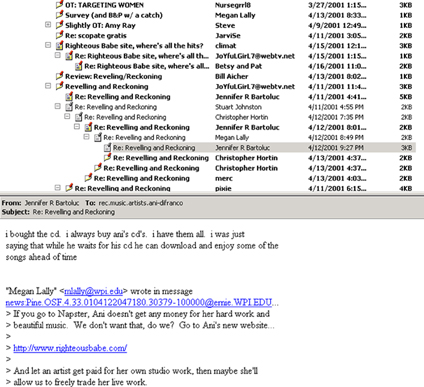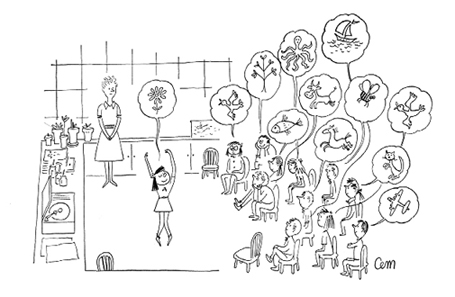|
|
Participants . Hyun-Yeul Lee . Jiawen Chen . Julie Yoo . Professor Judith Donath |
|
|
|
|
|
SOCIO-KINETICS: |
|
|
| Visualizing Impressions of People Behavior through Motion |
|
 |
|
| Why is it difficult to infer online social situations contrary to the way we interpret situations in the physical world? What factors help us interpret social situations in the physical world that need be included in social visualizations online? |
|
| Schmoozers on Seventh Avenue, Whyte, W. H. |
|
 |
|
|
|
What are our research goals? |
|
|
|
| Current browser interfaces allow us to participate in online discussions such as Usenet newsgroups. These interfaces show threading structure of asynchronous conversations between people. The visual presentation of conversations in this interface is text-based and in linear form; it allows the user to follow the flow of discussion. On the other hand, this type of presentation does not reveal the complexity of a social situation in conversations. For example, are the participants flaming at each other? Are certain participants supportive of other participant's views? How active are participants and how does one's popularity affect their activity? These examples address the social behaviour of participants, which is not visible through the face of current browser interfaces.
Social interaction is about the interaction between people and not merely about formal elements ascribed to people such as one's physical presentation. In newsgroup discussions, the visibility of messages going back and forth between participants initially tells us that there is dialogue and activity. It also shows which participants are present, but does not reveal social cues that arise from interactions between participants. In the physical world, social cues include qualities of behavior an individual may project through facial expressions and body gestures. In online discussion groups, social cues are not as apparent as in the physical world. The form, in which these messages and participants are represented as, makes it difficult for us to interpret social aspects and people behavior in the space. The reason behind this is that it is more difficult to interpret and depict subtleties of participants' behaviour in text-based messages, than it is to capture and represent footprints of messages between participants. This suggests that mining the content of messages may be useful to find patterns that resemble social cues found in the physical world.
|
|
 |
|
| This research focuses on using motion to represent both single and collective form of people behaviour. Not only does motion capture a narrative space inhabited by people, but it also attracts the viewer's eyes to make sense of moving images through a visual intelligence process of active construction. Motion has been commonly used to highlight change in behaviour. Here, we use motion to convey and gesture people behaviour. Motion used in abstract visualizations to convey behaviour have proven to be successful to the eyes of the viewer. The approach is novel but challenging; the manner in which the viewer will interpret these motions is subjective (Fig.1). |
|
|
 |
|
|
| Figure 1. Drawing by CEM; ©1961, The New Yorker |
|
|
|
|
|
|
|
|
|
|
|
|
|
|
|


